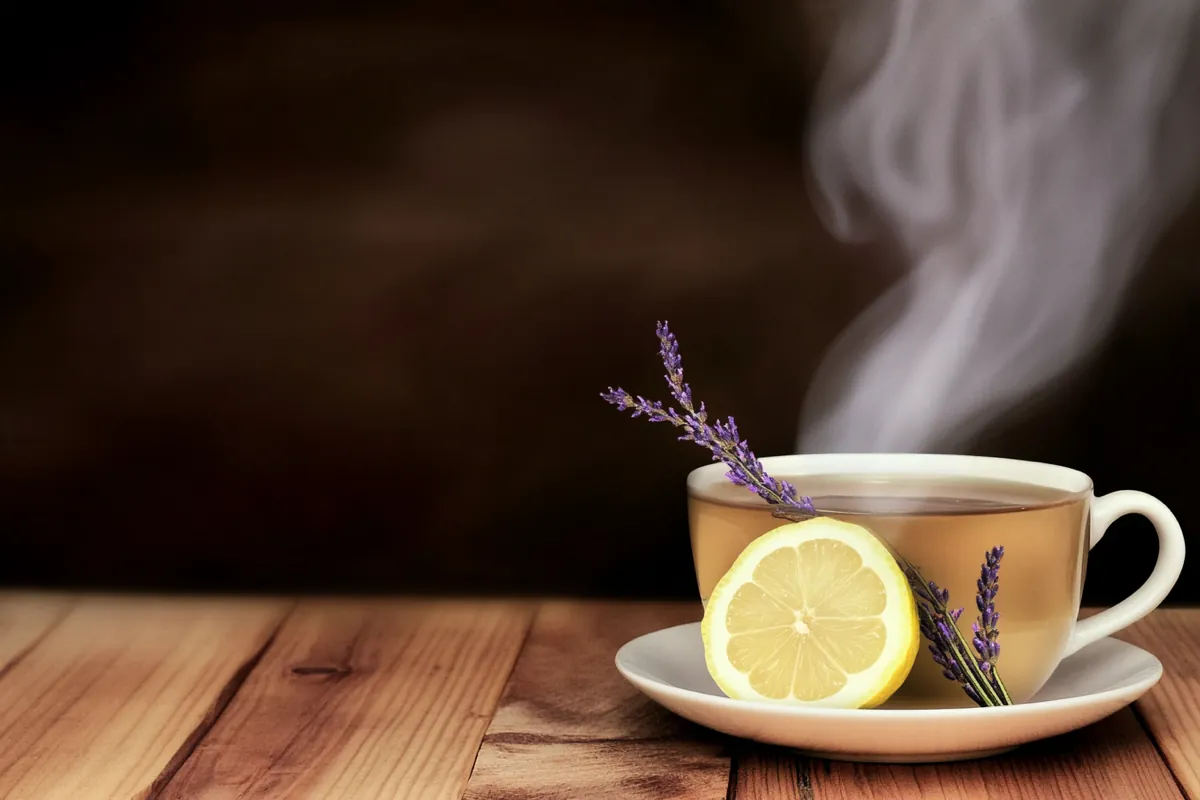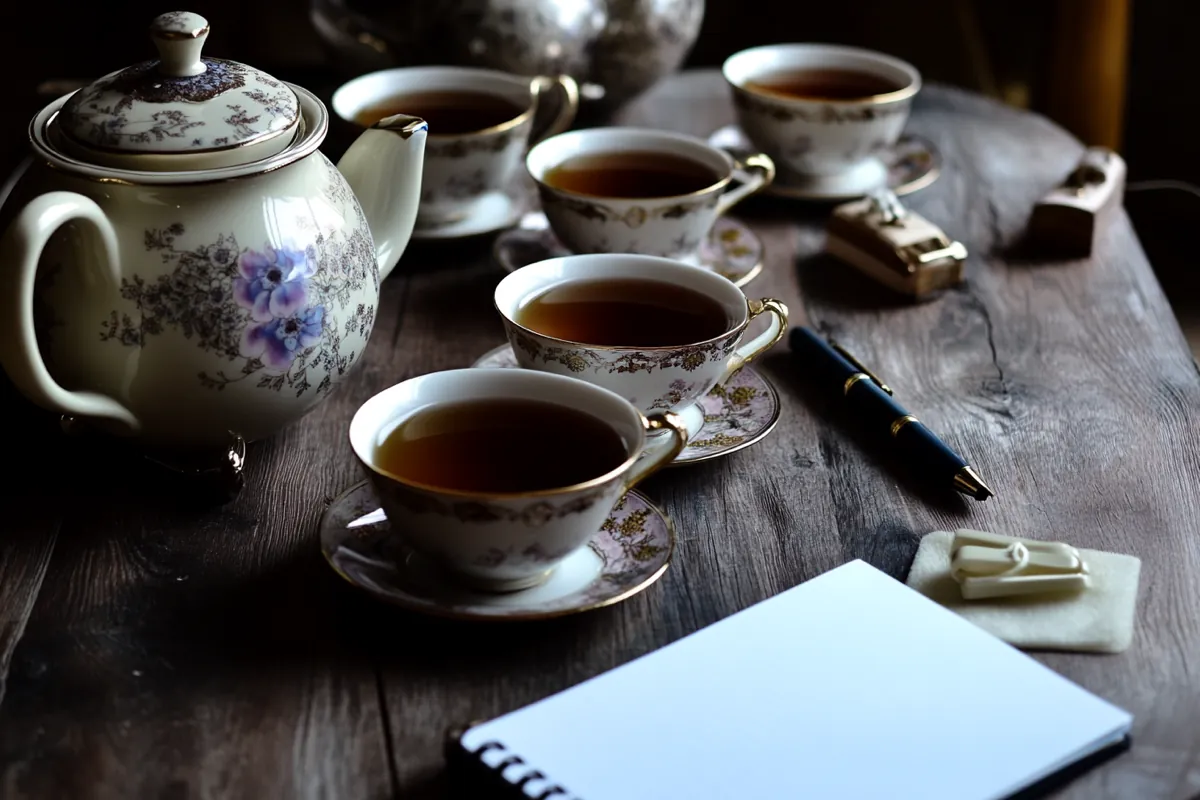Earl Grey tea is a beloved beverage for many, known for its unique flavor and aromatic qualities. However, many people wonder, is Earl Grey tea high in caffeine? This article will explore the caffeine content of Earl Grey tea, its health benefits, and how it compares to coffee.
Table of Contents
Introduction to Earl Grey Tea
Earl Grey tea is a flavored tea, typically black tea, infused with oil from the bergamot orange. This citrus fruit gives it a distinct aroma and flavor, making it one of the most recognized teas worldwide. The popularity of Earl Grey has led to various adaptations, including green and herbal versions.
What is Earl Grey Tea?
Earl Grey tea, traditionally made from black tea, is flavored with bergamot oil. This infusion not only enhances its taste but also adds a delightful fragrance. Many enjoy it hot, but it can also be served iced, making it a versatile choice.
Historical Background of Earl Grey Tea
The history of Earl Grey tea dates back to the 19th century, when Charles Grey, the 2nd Earl Grey, was said to have received a gift of tea flavored with bergamot. This unique blend became popular among the aristocracy and has maintained its appeal ever since. Today, Earl Grey tea is enjoyed worldwide, transcending cultures and preferences.
Understanding Caffeine Content in Earl Grey Tea
When considering caffeine, it’s essential to know how much is present in Earl Grey tea. The caffeine content can vary based on several factors, including the type of tea used and preparation methods.
How Much Caffeine is in Earl Grey Tea?
On average, a cup of Earl Grey tea contains about 40-70 mg of caffeine. This amount can vary based on the type of black tea used and the brewing time. For instance, longer steeping times can lead to higher caffeine levels.
Earl Grey Caffeine vs Coffee: A Comparative Analysis
When comparing Earl Grey caffeine vs coffee, coffee typically contains significantly more caffeine. An average cup of brewed coffee has about 95 mg of caffeine or more, depending on the brewing method. Therefore, if you’re seeking a caffeine boost, coffee may be the better choice.
Caffeine Content in Different Types of Coffee
Different coffee types can have varying caffeine levels. For example, espresso contains about 63 mg of caffeine per shot, while a standard 8-ounce cup of brewed coffee can contain anywhere from 95 to 200 mg.
Factors Affecting Caffeine Levels in Earl Grey Tea
Several factors influence the caffeine content in Earl Grey tea, including:
- Tea Type: Different black teas have varying caffeine levels.
- Brewing Time: Longer steeping releases more caffeine.
- Water Temperature: Higher temperatures can extract more caffeine.
Is Earl Grey Tea Good for You?
Many people enjoy Earl Grey tea not just for its taste but also for its health benefits. The nutritional profile of Earl Grey tea can provide various advantages, making it a popular choice.
Nutritional Profile of Earl Grey Tea
Earl Grey tea contains antioxidants, which are beneficial for health. These compounds can help combat free radicals in the body. Additionally, it has a small amount of vitamins and minerals, including vitamin C and potassium.
Potential Health Risks of Earl Grey Tea
While Earl Grey tea has many benefits, it’s essential to consume it in moderation. Excessive intake can lead to negative effects due to the caffeine content and potential interactions with certain medications. Always consult with a healthcare provider if you have concerns, especially regarding caffeine sensitivity.

Earl Grey Tea Benefits: What Are They?
Earl Grey tea is not just a delightful beverage; it also offers numerous health benefits. Understanding these advantages can help individuals appreciate this tea even more.
Antioxidant Properties of Earl Grey Tea
Earl Grey tea is rich in antioxidants, particularly polyphenols. These compounds help protect the body from oxidative stress caused by free radicals. Drinking Earl Grey tea regularly may support overall health by reducing the risk of chronic diseases such as heart disease and cancer.
Earl Grey Tea and Mental Health
Earl Grey tea can positively influence mental health in several ways. The calming aroma of bergamot oil is believed to reduce anxiety and stress levels. Additionally, the caffeine present in Earl Grey tea can enhance alertness without causing the jitteriness often associated with coffee.
Stress Relief and Relaxation
Many people find that sipping Earl Grey tea provides a comforting ritual, allowing for moments of relaxation amid a busy day. The act of brewing and enjoying a cup can promote mindfulness, which is beneficial for mental well-being.
Cognitive Benefits of Earl Grey Tea
Research suggests that the caffeine and L-theanine in Earl Grey tea can improve cognitive function. This combination enhances focus and concentration, making it a great choice for those needing a mental boost during their day.
How to Prepare Earl Grey Tea for Maximum Flavor
To truly enjoy Earl Grey tea, it’s important to prepare it properly. The right brewing techniques can enhance its flavor and aroma, elevating your tea experience.
Brewing Techniques for Earl Grey Tea
To brew the perfect cup of Earl Grey tea, follow these steps:
- Start with Fresh Water: Always use fresh, cold water for brewing.
- Temperature: Heat water to about 200°F (93°C) for black tea.
- Steeping Time: Steep for 3-5 minutes, depending on your taste preference.
- Strain and Serve: Remove the tea bag or leaves and enjoy!
Pairing Earl Grey Tea with Food
Earl Grey tea pairs beautifully with various foods. Its citrusy notes complement sweet desserts, such as lemon cakes or scones. Additionally, it can enhance savory dishes, such as grilled chicken or seafood, by adding a refreshing zest.
Popular Variants of Earl Grey Tea
Earl Grey tea has inspired numerous variations that cater to different tastes and preferences. Exploring these variants can enhance your tea-drinking experience.
Different Types of Earl Grey Tea
- Traditional Earl Grey: Made from black tea and bergamot oil.
- Green Earl Grey: A lighter version made with green tea instead of black tea.
- Cream Earl Grey: Infused with vanilla for a creamy, sweet flavor.
- Earl Grey Lavender: Combines bergamot with lavender, offering a floral aroma.
Specialty Earl Grey Teas Around the World
Different cultures have embraced Earl Grey tea, creating unique twists. For example, in India, chai blends with Earl Grey for a spiced version. In contrast, Japanese versions might incorporate yuzu, a citrus fruit, for a refreshing take.

Additional Resources and References
Exploring Earl Grey tea can be a delightful journey. To enhance your knowledge, consider these resources that delve deeper into tea culture and health benefits.
Books on Earl Grey Tea and Tea Culture
- “The Tea Book” by Louise Cheadle: This comprehensive guide covers various types of tea, including Earl Grey, and offers insights into tea culture.
- “Tea: History, Terroirs, Varieties” by Kevin Gascoyne: This book provides an in-depth look at tea’s journey from plant to cup, with sections dedicated to flavored teas like Earl Grey.
Online Tea Communities and Forums
Joining online communities can enrich your tea experience. Websites like Reddit’s r/tea and specialized tea forums allow enthusiasts to share their experiences, recipes, and recommendations. Engaging with others can broaden your understanding and appreciation of Earl Grey and other teas.
Related Articles and Content
If you enjoyed learning about Earl Grey tea, you might be interested in exploring related topics. Here are some articles to consider:
Exploring Other Types of Tea
Discover the fascinating world of tea beyond Earl Grey by reading about different varieties, such as green tea, white tea, and oolong tea. Each type has unique flavors and benefits worth exploring.
The Health Benefits of Different Types of Tea
Learn about the specific health advantages of various teas, including herbal teas and rooibos. Understanding their properties can help you choose the best tea for your needs.
Personalizing Your Earl Grey Tea Experience
Earl Grey tea can be customized to suit individual preferences. By adding different flavors and ingredients, you can create a unique tea experience.
Adding Flavors and Enhancements
To enhance your Earl Grey tea, consider adding:
- Milk or Cream: For a smoother, richer flavor.
- Honey or Sugar: For sweetness.
- Spices: Such as cinnamon or nutmeg for a warmer taste.
- Fresh Herbs: Like mint or basil for a refreshing touch.
Choosing the Right Ingredients
Selecting high-quality tea leaves and fresh ingredients can significantly impact the flavor of your Earl Grey tea. Look for organic bergamot oil and loose-leaf teas for the best results. Experimenting with different brands can also lead to delightful discoveries!
Conclusion: Recap and Final Thoughts
In summary, Earl Grey tea offers a delightful combination of flavor and health benefits. With moderate caffeine content, it serves as an excellent alternative to coffee. Its unique taste, coupled with its potential health advantages, makes it a popular choice for tea lovers. By exploring various brewing methods and flavor enhancements, you can enjoy a personalized tea experience that suits your preferences. Whether you’re sipping it for relaxation or a mental boost, Earl Grey tea truly has something for everyone.
FAQ
Many people have questions about Earl Grey tea, especially regarding its caffeine content and health benefits. Here are some of the most common inquiries answered.
Does Earl Grey Have More Caffeine than Coffee?
No, Earl Grey tea typically has less caffeine than coffee. While a standard cup of Earl Grey contains about 40-70 mg of caffeine, coffee can have between 95-200 mg per cup, depending on the brewing method. Therefore, if you’re looking for a lower-caffeine option, Earl Grey is a solid choice.
Which Tea Has the Most Caffeine?
Among teas, black tea generally contains the most caffeine. However, some varieties, such as Assam or English Breakfast, can have higher caffeine levels than Earl Grey. In comparison, green tea and herbal teas usually have significantly less caffeine.
Is it Okay to Drink Earl Grey Tea at Night?
Earl Grey tea can be enjoyed at night, but be mindful of its caffeine content. If you’re sensitive to caffeine, it might be best to opt for a decaffeinated version or enjoy it in moderation to avoid disrupting sleep.
Which Tea Has the Least Caffeine?
Herbal teas, such as chamomile or peppermint, typically have the least caffeine, often containing none at all. These teas are excellent choices for those looking to avoid caffeine entirely.




